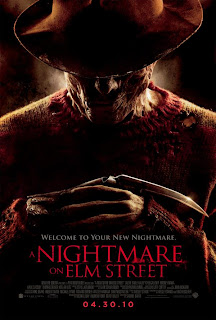
Unlike the other films I’ve been working on this month, I didn’t actually see the original Texas Chainsaw Massacre (1974) until I was about 25 years old. Basically, I had heard so many things about the film growing up that the idea of watching the actual movie scared me too much. It wasn’t until I got into the study of folklore that I decided to watch the film.
The movie itself follows the tragic tale of five kids who, after visiting the graves of the grandparents of two of the party, decide to explore the area looking for an old farmhouse that belonged to the deceased grandparents. Horrible, chainsaw involved events follow. The movie was based partly on real life serial killer Ed Gein (who was also the basis for Psycho and Silence of the Lambs), and involved a family of killer cannibals who make short work of these five kids, except for the Final Girl, Sally. Two of the clever parts of the original film are the opening narration, which gave the film a documentary feel, and the way the film plays with classic folklore and urban legends.
All right – I promise this will be my last educational segment this month, but you may need to know, so here goes:
Learning with Bookmonkey!
Lesson 2 - Urban Legends
Urban Legends are (usually) horror-based examples of modern folklore in which certain moral behaviours are described along with extreme punishments for ignoring these behaviours. Examples include people eating a Kentucky-Fried Rat when their mother has recently began a job outside of the home and no longer prepares home cooked meals, or the murder of young couples (or at least the boys) when they park their cars in out-of-the-way locations for making out. In terms of The Texas Chainsaw Massacre (1974) the crime that the protagonists commit one of the most basic crimes in classic folklore – that is they “stray off the path;” by searching an un-mapped area of Texas to look for the old home of Sally Hardesty’s grandparents, the kids involved are welcoming disaster. A more in-depth study of Urban legends can be examined in Jan Harold Brunvand’s seminal book on Urban Legends, The Vanishing Hitchhiker: American Urban Legends and Their Meanings (W.W. Norton and Company, 1981)
As I only watched this film as an adult, I was able to view it a little more critically than the others, and although it didn’t have a major effect on my love of horror films, I was able to appreciate it for what it was, and view the reimagining with an eye for what might change.
The 2003 reimagining is the film responsible for the recent trend of reimagining classic horror – that is, rather than simply remaking the film, attempting to change an aspect of the basic concept, creating an entirely new story. With the new Texas Chainsaw Massacre, the big change is that of the killer family. The film itself takes place in the same time period (1970s), location (rural Texas), and still has the same villain (Leatherface), and even the same opening narrator. The differences included: 1) making the kids a little more guilty in the classic horror sense – the guys in the van are attempting to transport marijuana so that they can sell it in their home town, 2) the killer family is no longer cannibalistic, and in fact, mostly live ordinary lives around the town, keeping Leatherface safe as a sort kid-brother to the town. 3) there is significantly more use of a chainsaw than in the original.
Like with many of the other reimaginings, we are given more back story in which sympathies are given towards the killer, but as he’s going around killing a bunch of kids, there is only so much sympathy we can give him. The leads all do a good job of being scared victims and the film’s Final Girl, Erin (played by Jessica Biel) is actually a really good example of the classic Final Girl, being an outsider to her friends, coming across all of their bodies and eventually taking a much more active role in the death of the villain.
In the end it wasn’t a movie I would own, but it worked. I can definitely see why it would end up leading to a similar trend in horror movies over the next decade.
 So here we are, one month and ten horror reimaginings later and what have we learned? In the simplest of statements:
So here we are, one month and ten horror reimaginings later and what have we learned? In the simplest of statements:






























